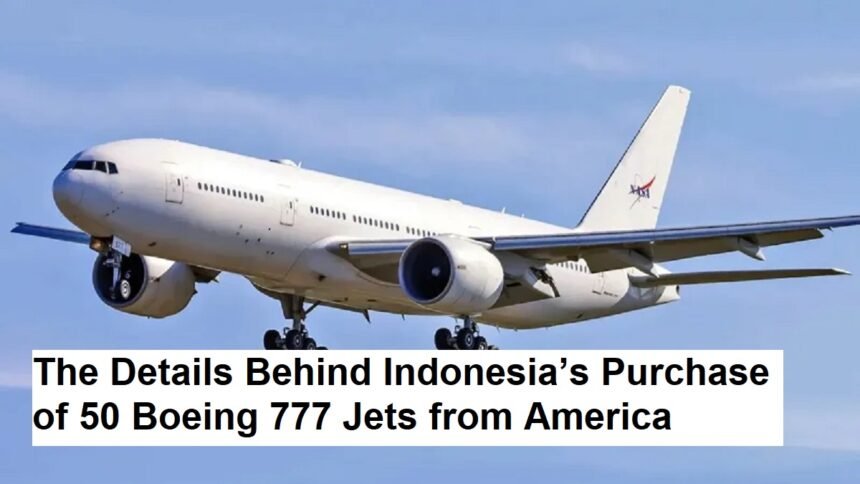Introduction
In a significant development for Indonesia’s aviation industry, the country has entered into an agreement with the United States to purchase 50 Boeing 777 aircraft. This deal not only signifies a major upgrade for Indonesia’s national airline fleet but also hints at strategic economic and diplomatic relations between Jakarta and Washington. The purchase, which involves a substantial financial commitment, has garnered attention from industry analysts, government officials, and the public alike.
The Background of the Deal
The agreement to buy 50 Boeing 777 jets is part of Indonesia’s broader efforts to modernize its aviation fleet, improve connectivity across its vast archipelago, and enhance its ability to host international tourism and trade. The Boeing 777, known for its reliability, fuel efficiency, and comfort, is a popular choice among major airlines worldwide for long-haul destinations.
The deal reportedly came after extensive negotiations between the Indonesian government and Boeing, the U.S.-based aerospace giant, with discussions centered around technical specifications, financing arrangements, and strategic partnerships. The agreement also underpins Indonesia’s commitment to strengthening economic ties with the United States, signaling a new chapter of cooperation in aviation and technology.
How Much Does a Boeing 777 Cost?
Pricing for aircraft like the Boeing 777 varies depending on the model, configuration, and customer-specific modifications. The list price for a Boeing 777-300ER — one of the most popular variants — is approximately $375 million USD, although actual purchase prices are often significantly lower due to discounts negotiated by airlines and governments buying in bulk.
Based on industry estimates and leaked information, the total value of Indonesia’s order for 50 aircraft could approximate $10 to $15 billion USD. This figure reflects negotiated discounts and potential additional costs for customization, maintenance agreements, and training.
It’s important to note that such deals typically involve complex financial arrangements, including leasing options, long-term maintenance contracts, and government incentives, which can influence the overall cost and payment structure.
Why Does Indonesia Need 50 Aircraft?
Indonesia’s vast geographical layout, with over 17,000 islands, makes air travel an essential component of its transportation infrastructure. The current fleet needs modernization to accommodate growing passenger demand, reduce operational costs, and ensure safety standards are met.
By acquiring 50 Boeing 777s, Indonesia aims to bolster its airline industry, support tourism, and increase international flights. The large volume also demonstrates Indonesia’s ambition to position itself as a regional hub for Asia-Pacific travel and commerce. Moreover, the procurement aligns with Indonesia’s broader economic development plans and infrastructure investments.
Strategic and Diplomatic Significance
This deal goes beyond mere economic considerations. It signals strengthening diplomatic ties between Indonesia and the U.S., with both nations emphasizing cooperation in technology, defense, and commerce. The purchase of American-made aircraft can foster further collaboration and shared interests, particularly under the framework of strategic partnerships.
Potential Challenges and Future Outlook
While the deal offers significant benefits, it also poses challenges. Indonesia must ensure the maintenance infrastructure and training programs are in place to operate and service the fleet effectively. Moreover, financing such a massive purchase requires careful planning to avoid budget strains and ensure sustainability.
Looking ahead, this acquisition could stimulate more deals between the two countries, possibly extending to other sectors like defense, technology, and infrastructure. The Indonesian government’s role in facilitating smooth procurement processes and ensuring transparency will be crucial.











